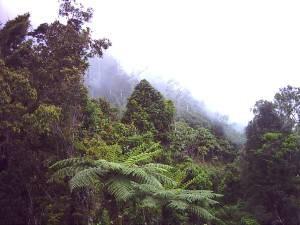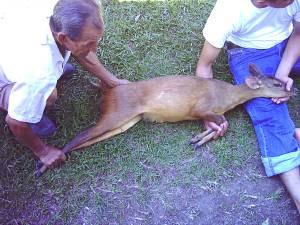Javier Adolfo Sarria Perea
This project aims to evaluate the impact of human activities upon populations of Andean tapir and red dwarf brocket of the Mamapacha massif, by means of the evaluation of their health, genetic and ecologic status. The data obtained will help to establish a field veterinary program for natural populations, and also may influence conservation management policies, that will support long-term wildlife protection.

The Andean region represents 25% of the Colombian territory. Because of its nature, this region holds diverse biomes such as paramo, cloud forest, Andean dry forest and chaparral among others, where great part of the total biodiversity in the world struggles to survive. All this richness is currently threatened by human activities such as the uncontrolled growing of the urban centres, the increasing of the agricultural frontier, the cattle ranching, the timbering, the mining and the building of infrastructure such as roads, dams and hydroelectric. Illegal activities such as narcotraphic, guerrilla and paramilitaries also affect greatly. The worst effects of these activities over the wildlife are the fragmentation of the populations, transmission of diseases, and local extinctions. Perhaps because of its pervasiveness, these effects have received little scientific and public attention in Colombia.

The Mamapacha massif, located in the Eastern Andes was recently declared natural reserve, and is legally protected by the Local Environmental Agency named CORPOCHIVOR, because it supplies water for several municipalities, and also plays a key role for the creation of future biological corridors. This region holds several threatened species such as the spectacled bear, the red dwarf brocket, and probably the Andean tapir.
The Andean tapir, considered endangered and near the extinction (EN) by the IUCN (2003), is the smallest species of tapir that exists, inhabits cloud forests and paramos, in elevations between 2000 and 4500 m, in the Andes of Peru, Ecuador and Colombia. This species has been little studied in the northern Eastern Andes of Colombia.
The red dwarf brocket, classified near to be threaten (LR/nt) by the IUCN (2003), inhabits almost exclusively forested habitats of the Eastern Andean Cordillera of Colombia and Venezuela. Its patterns of habitat use, ecology, genetics and health status are unknown in Colombia, for this reason basic research on the species must be developed.